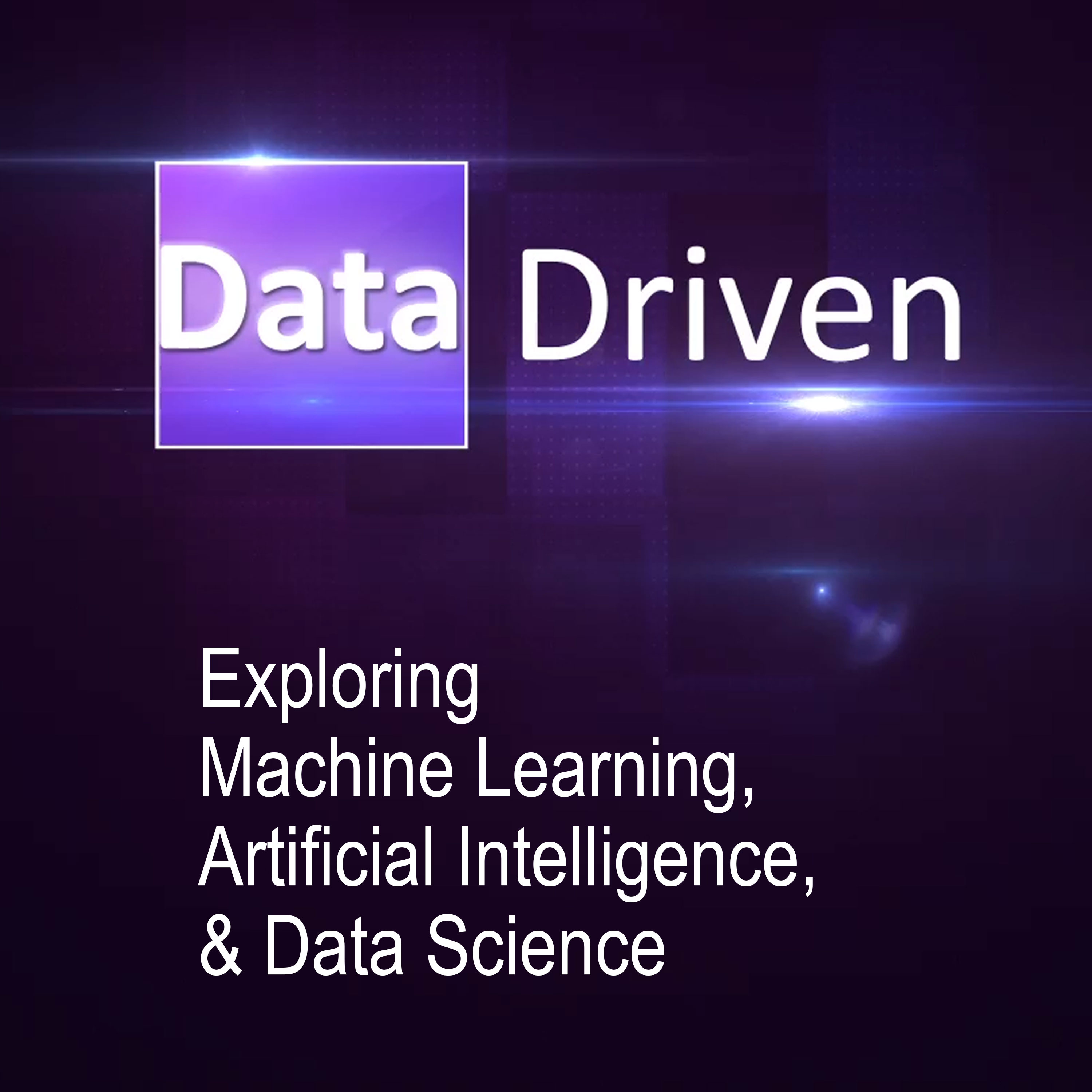

Data Driven
Data Driven
Data Driven: the podcast where we explore the emerging field of Data Science. We bring the best minds in Data, Software Engineering, Machine Learning, and Artificial Intelligence right to you every Tuesday.
The field of data science mashes up the worlds of statistics, database architecture and software engineering. Data Scientist has been labelled by the Harvard Business Review, as "the sexiest job of the 21st century." A quick search of job search sites reveal that this field is in high demand.
In a world where Data is the new Oil, Data Science the new Refineries, consider this Car Talk for the Data Age. Every week we bring the best minds in this emerging field straight to you. Our goal is to educate and inspire our listeners so that they can be prepared to thrive in a Data Driven world.
The field of data science mashes up the worlds of statistics, database architecture and software engineering. Data Scientist has been labelled by the Harvard Business Review, as "the sexiest job of the 21st century." A quick search of job search sites reveal that this field is in high demand.
In a world where Data is the new Oil, Data Science the new Refineries, consider this Car Talk for the Data Age. Every week we bring the best minds in this emerging field straight to you. Our goal is to educate and inspire our listeners so that they can be prepared to thrive in a Data Driven world.
Episodes
Mentioned books

Nov 14, 2022 • 2min
*Update* PASS Summit and AWS re:Invent
Andy is currently in Seattle attending the PASS Summit and I will be headed to AWS re:Invent this year!

Oct 31, 2022 • 58min
Iain Thomas on What Makes Us Human? Democratizing Creativity with AI
In this fascinating discussion, Frank sits down with author, poet, and AI enthusiast about the nature of creativity, particularly in light of recent innovations in so called "generative AI."The episode ends with a powerful reading from his most recent book "What Makes Us Human," in which an Artificial Intelligence answers some of life's biggest questions. He co-wrote, in part, with the GPT-3 model and Jasmine Wang, an actual human.Listen in for a fascinating chat on philosophy, artificial intelligence, and creativity.LinksWhat Makes Us Human? Available Nov. 1, 2022Audible Bookhttps://amzn.to/3gVpHD2Kindle Bookhttps://amzn.to/3zr9ImHHardcoverhttps://amzn.to/3DqhGh6

Oct 10, 2022 • 1h 17min
Mark Tabladillo on Ethics in AI, Changing Seasons, & Quantum Computing
Today marks a special occasion as Data Driven welcomes our first Three Pete guest, Mark Tabladillo.In his third appearance on the podcast, Mark is Cloud Solution Architect on the Strategic Missions and Technology team at Microsoft.Enjoy the show.

Oct 6, 2022 • 7min
*DataPoint* Catching Up with Noelle Silver Russell at Dev Nation DC
Yesterday, I was at the first in person Dev Nation DC event in two years. While there, I caught up with the one and only Noelle Silver Russell.

Sep 6, 2022 • 16min
RIP Kim Schmidt
Reflecting on the life and legacy of a good friend, former business partner, and a true data leader.

Aug 30, 2022 • 53min
Ava Naeini on Pulse, Healing, and Avoiding Burnout
In this episode of Data Driven, Andy and Frank interview Ava Naeini, Founder and Data Architect of Pulse Operations, speaks to the intersections of technology and wellbeing.Pulse is an insight tool designed to monitor and report on the health of distributed systems, minimizes human engineer involvement in an effort to maximize employee efficiency and reduce burnout.

Aug 24, 2022 • 1h 1min
Himanish Goel on Education, Starting a Career, & More
In this episode of Data Driven, Frank and Andy interview Himanish Goel, Technical Architecture Delivery Analyst at Accenture and recent graduate of VCU in Richmond, Virginia.It's a wide ranging discussion covering the transition from being a student to entering the professional workforce, podcasting, and thoughts on the current state of the school system in the United States.All of Himanish's links: https://linktr.ee/himanishgoel

Aug 15, 2022 • 53min
*LIveStream* Virtual Personalities, Ethics, and Elon Musk Talks to His Chatbot Replica
In this live stream, Frank and Andy reflect on their conversation with Justin Harrison.

Aug 11, 2022 • 44min
Kristen Kehrer on Statistics, Data Poetry, and Dunkies
In this episode of Data Driven, Frank interviews Kristen Kehrer, developer advocate at CometML and host of the Cool Data Projects Show. In case, you're wondering where is Andy. He was unable to make the recording due to a last minute schedule change. The show must go on, after all.Learn more about CometMLhttps://www.comet.com/?utm_source=kristen&utm_medium=referral&utm_campaign=online_kristen_2022

Aug 8, 2022 • 57min
Justin Harrison on Virtual Posthumous Communications
In this episode of Data Driven, Frank and Andy interview Justin Harrison, the founder and CEO of YOV, You Only Virtual. YOV aims to develop means to provide posthumous communications, or being able to converse with the dead.This is not done via paranormal communications, seances, or ouija boards, this is using AI to preserve a person's communications style in order to out live them.This is quite the interesting talk that touches upon philosophy, theology, ethics, and mathematics.


